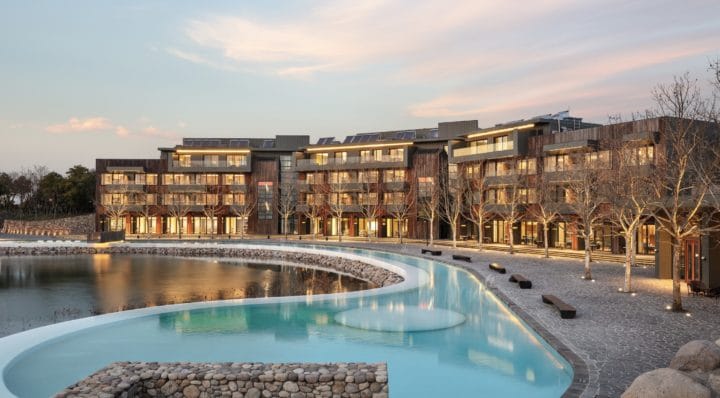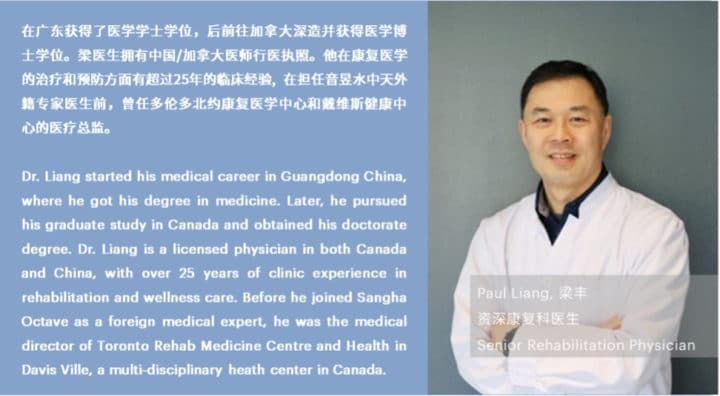Secrets On Relieving Back Pain from SANGHA Retreat
June 8, 2021 by Hidden Doorways

“OCTAVE TIPS” is a new column from Octave Institute, who oversees the immersive wellness retreat, SANGHA Retreat set in Suzhou, China. Learn top lifestyle tips from their wellness experts in an easy and accessible way, advising on everything from diet, breathing, sleep, exercise, mindfulness, and healing, helping to foster a happy, healthy and comfortable attitude to life and way of living.
OCTAVE TIPS: The Back Pain Secret
“Why does your back start to ache as soon as you get to work?”
As a professional, do you suffer from constant shoulder, neck and lower back pain? Even regular massages and massage pillows might not help relieve your muscle tension.
In fact, research shows that up to 85% of people will suffer from lower back pain in their lifetime, and it is not always caused by the sciatic nerve. The root cause of chronic lower back pain often lies in a lack of core strength and stability. Without a strong core to provide a strong foundation we can experience serious pain or even spinal injury.
Therefore, the most effective way to prevent lower back pain is to exercise the core muscles and stabilize the spine through training programs.
So, what is the core? And how can we exercise it to relieve lower back pain? To respond to the above, Paul Liang, a Senior Rehabilitation Physician, offers his advice:
Q1: What is the core?
The core is the body’s central axis, at the center of which is the spine. It is a complex muscle group that is commonly considered the torso but extends far beyond the abdominal muscles.
The core is the starting point for any movement your body makes. For example, when the upper body is bent forward, your center of gravity also shifts, putting pressure on the spine. At this time, if the core is strong enough it will support the movement, making it smooth and reducing the pressure on the spine.
In addition, many of the spinal nerves passing through the core connect to the lower body, so strengthening your core can also increase the stability of the knee joint, the strength of the lower body and the contractile strength of muscle fibers.
Improving core stability will improve the stability of the body and keep the lower back and pelvis in a safe and neutral position.
Q2: What are the benefits of core stability?
There are three main functions to consider when training your core muscle group.
Stabilizing the lumbar spine and reducing spinal pressure:
The goal of core training is not to strengthen large muscles but to strengthen the small muscle groups closest to the spine, shoulder and hip joints. It is a concept that considers both stability and mobility. The stronger the core, the lower the risk of injury in daily life or on the sports field. The likelihood of lower backpain is also greatly reduced.
Improving movement control:
A stable core can effectively transfer strength to the limbs through the power chain, making movements both smoother and more explosive.
Encouraging awareness of the lumbar spine and pelvis:
When we are injured, the pain affects out motion control center, which can stop the muscles responsible for stability from coming out to work. At the same time, it will also affect sensory feedback, which is responsible for the disability of the stable muscles and the deterioration of proprioception, or our awareness of them. If we want to change this problem, training our core is a simple way to stimulate deep muscle strength.
Q3: How can I train my core?
Professional athletes train their cores to help them lift more weight and complete more challenging movements, so as to achieve better competition results. All kinds of sports use the core to transmit strength. By using resistance training from different sources and directions, you can build a strong and stable core.
Finally, I want to remind you that the most taboo thing in core training is hard support. Don’t let your form suffer to compete for time. Hard support can actually increase the burden on the lower back. It is easy to get hurt if you are training incorrectly. Remember that the real game is on the court. We should only feel the benefits of training rather than experience pain.

Contact:
SANGHA Retreat by OCTAVE Institute
199 Yang Cheng Ring Road
Jiangsu Province 215000
Suzhou, China
Telephone: +86 (512) 6788 1888
Website: www.sangharetreat.com


